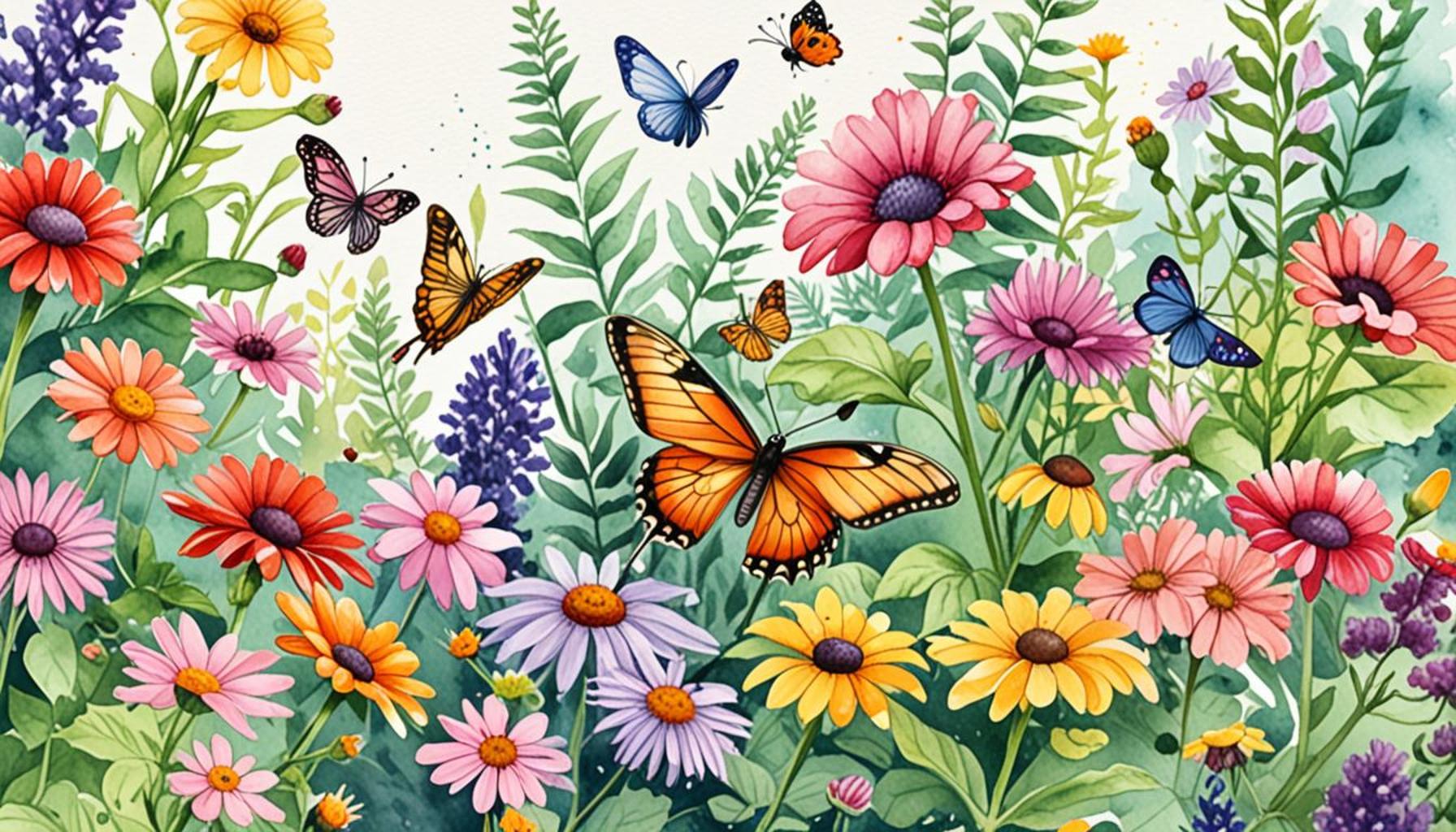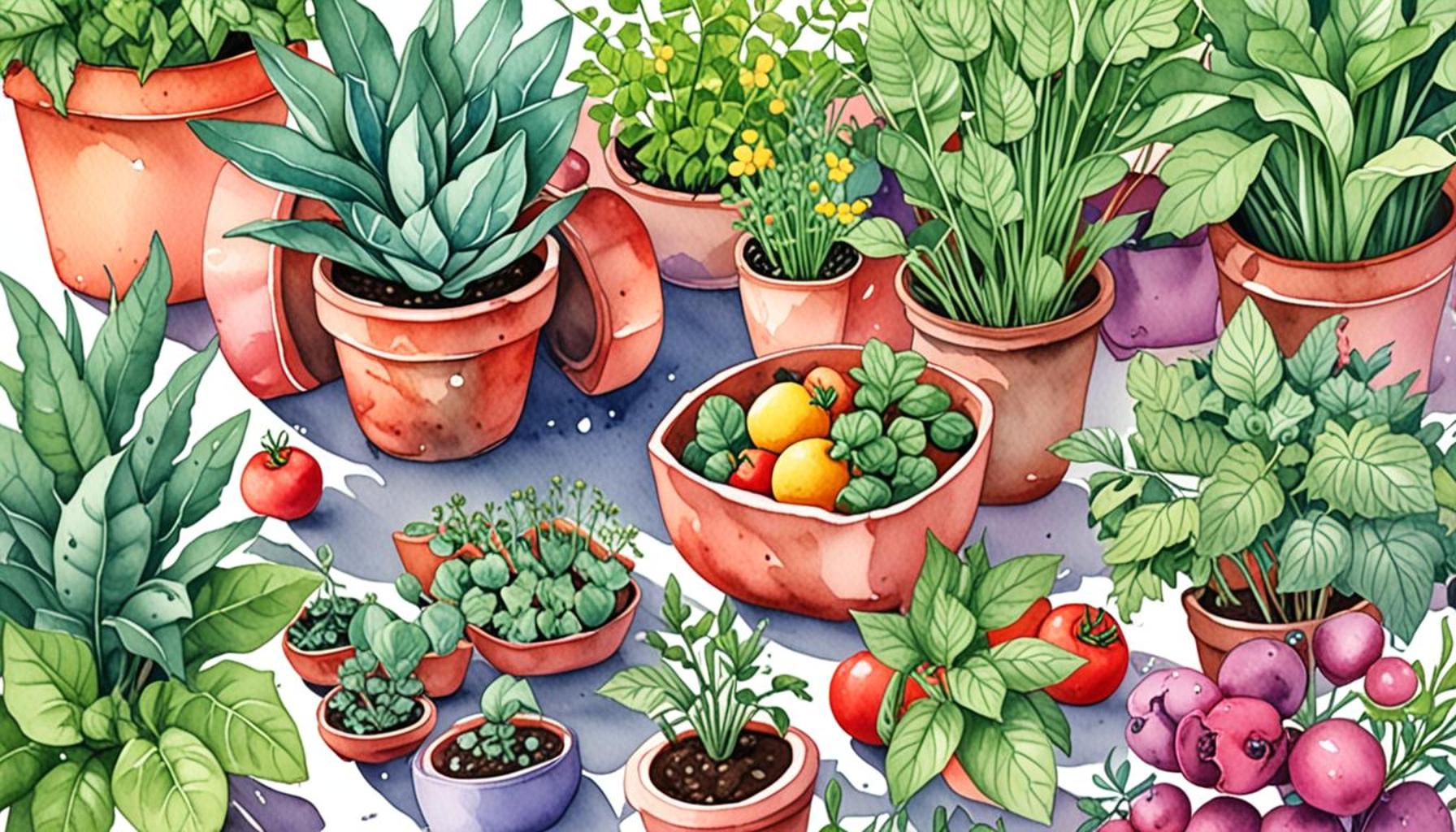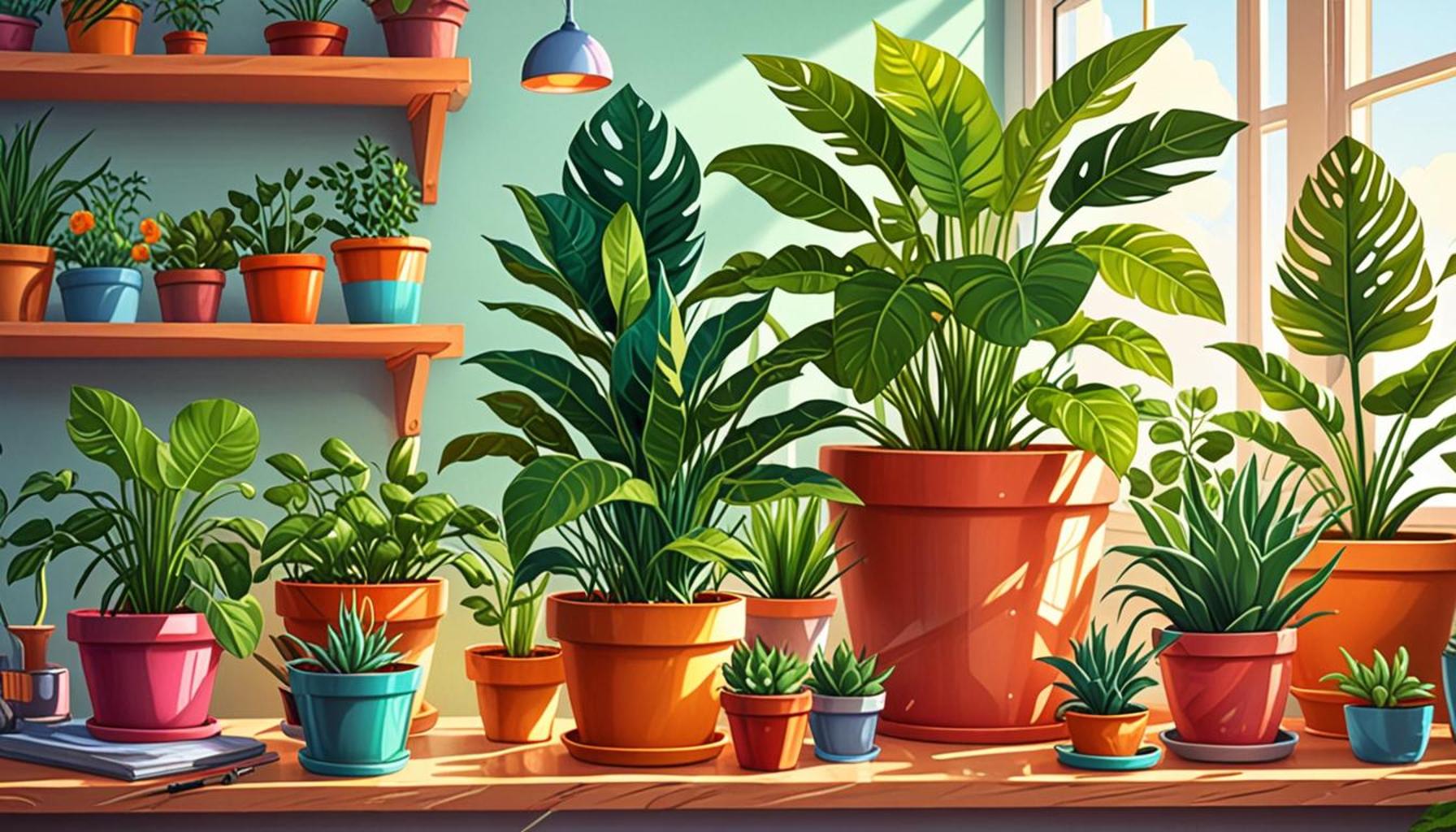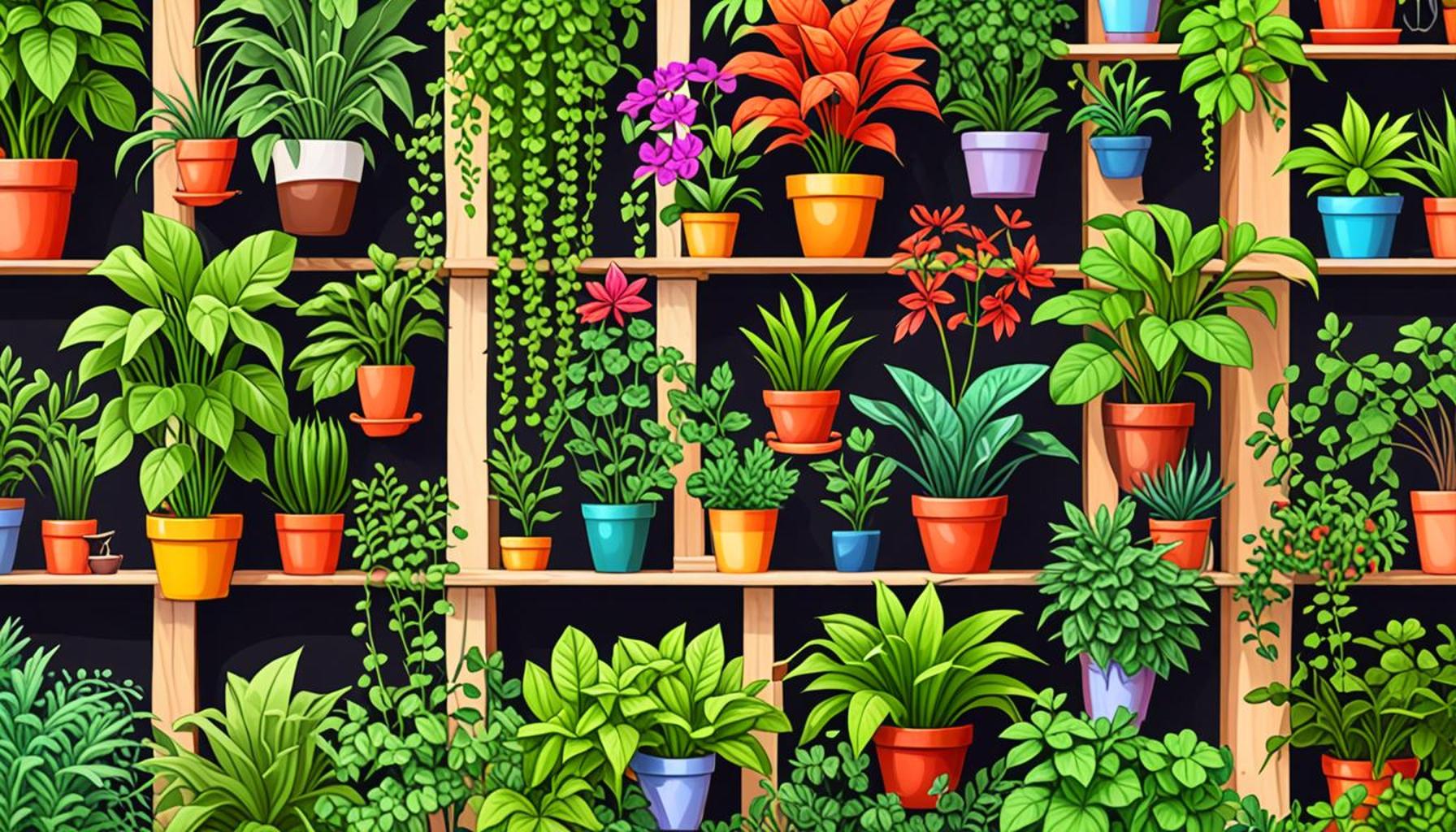Plants that Attract Pollinators: How to Select the Best Options for Your Garden

Discover the Magic of Pollinator-Friendly Plants
Creating a vibrant garden goes beyond aesthetics; it’s about nurturing a thriving ecosystem. Attracting pollinators, such as bees, butterflies, and hummingbirds, is essential for the health of your plants and the environment. By selecting the right plants, you can enhance not just your garden’s beauty but also its productivity.
Why are pollinators important? Here are some key facts that highlight their crucial role:
- 80% of flowering plants depend on animal pollination to reproduce, showcasing their fundamental role in the life cycle of many plants.
- Pollinators contribute to the production of one-third of the food we consume, including fruits, vegetables, and nuts, underscoring their impact on our diets and the agricultural sector.
- Healthy pollinator populations support a balanced ecosystem, enhancing biodiversity and the stability of environmental functions.
When choosing plants for your garden, consider the following vital factors:
- Native species: These plants are better adapted to local climates, soil types, and pests. For example, in the United States, Milkweed is not only beautiful but crucial for the lifecycle of Monarch butterflies, which rely on it for food and habitat.
- Diversity: A variety of shapes, colors, and bloom times can attract a broader range of pollinators. Incorporating plants that flower in different seasons—like spring bloomers such as Purple Coneflower and summer blooms like Black-eyed Susan—ensures a steady supply of nectar throughout the year.
- Scent and nectar: Sweet-smelling and nectar-rich flowers entice more visitors. Flowers such as Lavender and Bee Balm not only draw in pollinators with their fragrance but also provide abundant food sources for them.
Understanding these principles will help you create a garden that delights the eyes while serving a greater ecological purpose. For instance, establishing a small water feature, like a birdbath or a shallow dish with stones, can further attract hummingbirds and bees, providing them with hydration they need.
In the following sections, we will delve into specific plants and strategies to help you achieve a successful pollinator-friendly garden. By engaging with nature in this way, you’re not just beautifying your yard, but actively participating in the preservation of vital species that nourish our planet. Keep reading to explore how your garden can become a sanctuary for these amazing creatures, making a positive impact on both the environment and your community.
DISCOVER: Click here to learn about natural pest control strategies
Choosing the Right Plants for Pollinator Attraction
Understanding the specific needs of various pollinators is key to selecting the best plants for your garden. Each type of pollinator is drawn to different characteristics in plants, such as color, shape, scent, and nectar availability. By focusing on these traits, you can create an environment that is not only visually appealing but also a haven for these essential insects and birds.
Know Your Pollinators: Before diving into plant selection, it’s essential to identify the pollinators that frequent your area. In the United States, there are over 4,000 species of native bees, alongside countless butterflies and hummingbirds. Each species may prefer different types of flowers based on their anatomy and feeding habits. For instance, long-tongued bees are naturally attracted to tubular flowers, such as Cardinal Flower and Penstemon, while short-tongued bees favor open blossoms like Sunflowers and Black-eyed Susans.
Consider Blooming Seasons: Timing is crucial in attracting pollinators. A well-planned garden should feature plants that bloom at different times throughout the growing season. This approach not only keeps your garden colorful year-round but ensures that pollinators have a reliable nectar source during various life stages. Here’s a brief seasonal breakdown to guide your selection:
- Spring: When pollinators emerge from hibernation, introduce early bloomers like Creeping Phlox and Trillium.
- Summer: Summer is a bustling time for pollinators. Incorporate vibrant flowering plants such as Bee Balm, Rudbeckia, and Lavender.
- Fall: As the growing season winds down, plants like Aster and Goldenrod provide much-needed sustenance for pollinators preparing for winter.
Plant Color and Arrangement: The color of flowers plays a significant role in attracting pollinators. Bright colors such as yellow, orange, and purple stand out and are especially appealing to bees and butterflies. Strategically arranging plants in groups rather than scattering them can create a more inviting space, allowing pollinators to focus their energy on a concentrated area, making feeding more efficient.
In addition to attracting various species, consider incorporating plants that provide habitat and shelter for pollinators. Native grasses and shrubs can create a beneficial buffer zone that offers protection from predators and nesting sites for solitary bees. The combination of nectar-rich flowers and safe habitats can significantly boost your efforts in creating a pollinator-friendly garden.
As you move forward with your garden plans, remember that patience and observation are vital. The more you learn about your local pollinator populations and their preferences, the better equipped you’ll be to meet their needs. In the sections ahead, we will continue to explore specific plant recommendations and how to maintain your garden as a thriving ecosystem.
Understanding the Role of Pollinators in Gardening
Plants that attract pollinators are essential in any garden, as these wildlife creatures play a critical role in the ecosystem. Pollinators, including bees, butterflies, and hummingbirds, aid in the reproduction of flowering plants by transferring pollen from one bloom to another. This process increases the yield of fruits, vegetables, and even ornamental plants, exponentially enhancing the biodiversity of your garden space.
Identifying Suitable Pollinator Plants
When selecting plants to attract pollinators, it’s crucial to consider their specific needs, such as sunlight, soil type, and water availability. Diversity is key—having various plant species ensures that there is something blooming throughout the growing season, providing a continuous food source for pollinators. Native plants are often the best choices, as they are adapted to the local environment and provide the most effective sustenance for local pollinators.
Seasonal Blooming Patterns
To create a habitat that supports pollinators year-round, incorporate plants that bloom in different seasons. For example, early bloomers such as crocus or daffodils can provide food in spring, while asters and goldenrods offer late-season nourishment. Additionally, consider incorporating herbs like lavender and thyme, which attract pollinators and can be utilized in your cooking.
Creating a Pollinator-Friendly Environment
In addition to selecting the right plants, creating a welcoming environment is crucial. Reduce pesticide use, as these chemicals are harmful to pollinators. Instead, consider organic gardening practices that foster a healthier ecosystem. Providing shelter, such as insect hotels or leave small patches of bare ground, can encourage native pollinator populations to thrive.Explore the power of nature by selecting the right plants for your garden to attract pollinators. As you delve into this topic, consider seeking out local gardening workshops or resources from local botanical gardens.
| Category | Description |
|---|---|
| Plant Diversity | Incorporate multiple plant species for varied blooming times. |
| Local Natives | Native plants attract local pollinator species better than exotics. |
| Seasonal Blooms | Ensure flowers bloom at different times for year-round food sources. |
| Pesticide Reduction | Maintain a pesticide-free environment to protect pollinator health. |
LEARN MORE: Click here for best practices on harvesting fresh herbs at home
Diverse Plant Choices for Pollinator Diversity
Creating a successful pollinator garden involves not just selecting the right plants, but also ensuring a diversity of species that cater to a variety of pollinators. The more diverse your plant selection, the higher the likelihood of attracting different pollinators while promoting a balanced ecosystem. Some key categories to consider include:
- Nectar-Rich Plants: Beyond aesthetics, nectar availability is a critical factor in attracting pollinators. Plants like Milkweed and Coneflowers are renowned for their nectar-rich blossoms, enticing monarch butterflies, bees, and hummingbirds alike. Additionally, incorporating Borage can attract various bee species, making it a star in any pollinator garden.
- Pollen-Producing Plants: Some pollinators, particularly solitary bees, rely heavily on pollen for food. Plants such as Catmint and Cosmos provide abundant pollen sources. By selecting flowers known for both nectar and pollen, you’ll ensure that your garden provides a hearty meal for these crucial pollinators.
- Diverse Flower Shapes: Different pollinators have unique preferences when it comes to flower shapes. The tubular flowers of Penstemon and Hummingbird Mint draw in hummingbirds, whereas flat-topped flowers like Yarrow are accessible to many species of bees and butterflies. Mixing flower types will help accommodate the various pollinators that visit your garden.
Incorporating Native Plants
One of the most effective strategies for attracting pollinators is to focus on native plants. Native species are well-adapted to local climates and soil conditions, requiring less maintenance and fewer resources than non-native varieties. They also tend to produce more abundant and higher-quality nectar and pollen, making them a favorite among local pollinators. Examples of native plants include:
- Echinacea purpurea (Purple Coneflower) is not only a stunning addition to any garden but also serves as a magnet for various bees and butterflies.
- Asclepias tuberosa (Butterfly Weed) can attract not only butterflies but also bees, creating a buzz of activity.
- Rudbeckia hirta (Black-eyed Susan) thrives in many soil types, offering vibrant blooms that attract an array of pollinators throughout the summer.
Creating a Pollinator-Friendly Environment
Beyond plant selection, consider the overall environment of your garden. Pollinators thrive in areas that offer a mix of shelter, food, and water. Implementing companion planting can also enhance the survival rates of pollinators by introducing plants that support each other’s growth and pest resistance. Additionally, leaving some areas of your garden untamed will create habitat for ground-nesting bees. Providing a shallow water source, like a birdbath with pebbles, gives thirsty pollinators a place to refresh themselves.
Finally, aim to minimize pesticide use, as many chemicals can be harmful to pollinators. When pest control is necessary, opt for organic and environmentally-friendly solutions that are less likely to impact these essential creatures.
By diversifying your plant selections, embracing native species, and fostering a pollinator-friendly environment, you’ll not only beautify your garden but also contribute positively to the ecosystem. With thoughtful planning and attention to the needs of your local pollinators, your garden can flourish as a buzzing sanctuary for these vital allies in food production and biodiversity.
DON’T MISS: Click here for essential tips
Final Thoughts on Cultivating a Pollinator Paradise
As we have explored throughout this article, establishing a vibrant pollinator garden begins with the careful selection of plants that offer both beauty and sustenance to these essential creatures. A thoughtful mix of nectar-rich and pollen-producing flora, particularly native plants, not only draws in a plethora of pollinators but also fortifies the local ecosystem. By fostering biodiversity through various flower shapes and colors, you can create an inviting haven for bees, butterflies, and hummingbirds alike.
Moreover, enhancing your garden’s overall environment, with features like shelter and a fresh water source, is crucial in supporting these vital allies. It’s important to remember that every small action contributes significantly to the health of our ecosystem. Practices such as composter planting and avoiding harmful pesticides can further elevate your garden’s capacity to sustain pollinators.
In the end, enriching your garden with plants that attract pollinators is not merely an aesthetic endeavor; it is a commitment to preserving biodiversity. As you embark on this journey, consider observing the pollinators that visit your garden and their unique interactions with each flower. By creating a sanctuary that benefits both your landscape and the planet, you become an active participant in safeguarding the future of our environment. With patience and passion, your garden can thrive as a bustling sanctuary for pollinators, fostering hope and renewal for generations to come.


